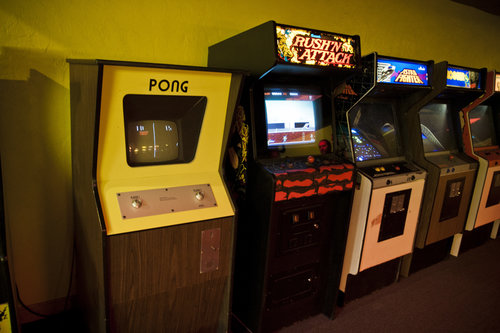A few weeks ago I went to an arcade for the first time in years.
To play, I had to place quarters in the games. This means that I had to go to the ATM, get some cash, and then place it in the change machine they had there.
My buddy and I decided to play some NBA Jam. It’s one of those over-the-top sports games where you can jump 50 feet in the air, throw the ball as fast as a rocket, and so on.
We each put one quarter in the machine and battled…
…For 3 or 4 whole minutes, at which point the machine asked for more money.
“To continue playing, please enter 1 token…”
So we put in another quarter… and another… and another.
A full game NBA Jam ending up costing $1.00 each (which is expensive for a retro game).
And the process of putting in quarter after quarter was quite unpleasant.
Why?
Because the game kept reminding us of the cost of our actions. It kept reminding us that our fun-time wasn’t free.
Which brought to my mind the behavioral economics research on “the pain of paying”.
Paying for things hurts. We don’t like parting with our hard-earned dollars. Businesses know this and have thus spent decades experimenting with different ways of making paying for things less unpleasant.
The best example of this might be “autopay” or subscription billing, where a company automatically charges you for a product or service. The money is taken from your account without your awareness… so you don’t have to consciously feel your loss.
That’s one strategy–out of sight, out of mind. But another strategy is what I’ll call *obfuscation*. This is where a company makes it less obvious that you’re parting with your money.
I know, it sounds a little weird. Let me explain.
When you purchase a coffee with cash, you pull physical objects ($ bills) out of your pocket and hand them over to the cashier. The cashier takes the bills you’ve given them, gives you back fewer bills (and maybe some quarters, dimes, and nickels), and then hands you your coffee.
A transaction has occurred and it’s really obvious that you’ve parted with some of your resources. In fact, you’ve literally given up some physical assets ($ bills).
Our minds recognize this and bristle.
To combat this, companies have created ways for people to purchase things that obscure of this feeling of loss. The best example of this? The credit card.
When you purchase something with a credit card, you don’t lose the card you’ve given over. You’re not parting with anything. You merely swipe a piece of plastic, see some little numbers on a screen or piece of paper, sign your name, and then take your stuff.
It’s a fairly painless process.
Why? Because it’s so… abstract. It doesn’t feel like you’re giving up anything. You’re looking at numbers on a screen and signing your name.
This is one of the reasons why people spend so much money with credit cards.
In fact, there are entire personal finance programs that are built around increasing the pain of paying by having people only use cash (example: The Envelope System). More pain, less spending.
So if your goal is to get people to spend less money, and have a worse experience, you should have people pay with cash AND increase how frequently they have to part with their money.
And that’s exactly what an arcade is designed to do.
Most of the games constantly remind you how much they cost (“insert coins to continue!”) and they require you to use physical $$.
It’s brutal.
A better move would be to charge an entry fee and then let people play for free. That way, you’re letting them enjoy their time guilt-free. You’re not reminding them that their fun-time has a cost.
Coming up with the right “all you can play” cost would be tricky… but it would be a win-win. Happy customers are repeat customers.
Until tomorrow,
Jason
PS: If you want to get all the best, new behavioral science in your inbox every 2 weeks, be sure to sign up for my premium newsletter: https://behavioralsciencenewsletter.com/





